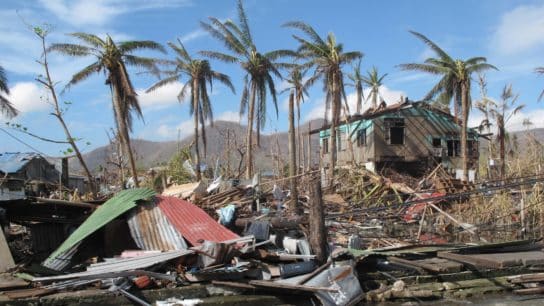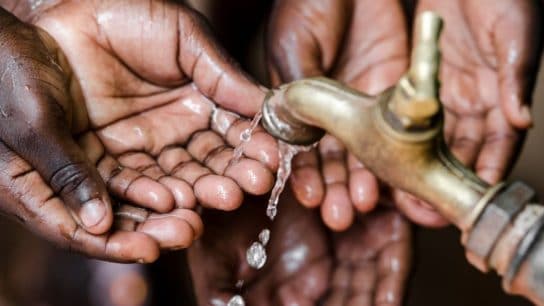Agriculture accounts for around 70% of all water withdrawals globally according to the World Bank, and approximately 60% of that is wasted, largely due to inefficient applications according to the UN’s Food and Agriculture Organisation (FAO). With water increasingly valuable against the backdrop of a rising human population and climate change, can AI be used to prevent water wastage?
—
Simple techniques like rainwater harvesting and wastewater recycling are already being used in many regions to reduce water consumption. And many farms have realised the benefits of replacing their surface and sprinkler irrigation systems with more efficient drip irrigation systems.
But there’s another technology that could provide much bigger benefits to farms the world over: Artificial Intelligence.
You might also like: Using Oysters as a Flood Defence Strategy

How Can AI Solve Climate Change?
An Italian startup, Blue Tentacles, has come up with a “precision based” AI system that takes note of humidity, temperature, climate data and forecasts as well as satellite data to help farmers improve their irrigation practices whilst preventing water wastage and conserving energy.
In Japan, similar digital farming solutions collect data from soil and light sensors to advise on the quantity of water and fertilisers required. This is particularly useful to inexperienced farmers who might need help to improve productivity while reducing water consumption. These digital technologies are already being used by a number of large scale company run farms in Japan like GRA Inc, a strawberry farm that has gained a competitive edge by embracing technology.
A fuzzy logic system developed in Cordoba Spain, assesses and predicts the varying water needs of different users (for example, different crop growers in an association). This allows farming associations to not only manage water supplies more efficiently, but also to schedule maintenance and repair tasks, hire staff and manage electricity usage more effectively.
ConserWater tracks how water is distributed in a field using satellite and historical data. This allows users to fine tune their irrigation supply and also identify any leaks in the irrigation pipes. Their AI system can learn to identify damaged areas in a pipe without the need for manual inspection. It is a scalable solution working without ground sensors, and farmers would only need a desktop or a smartphone to access the data and receive notifications. Their products are being used by a 100+ farmers across the globe.
The fight to preserve freshwater extends beyond bucolic countryside hedges spilling into hydro-supply monitoring. UK-based United Utilities has partnered with Emagin to develop AI to manage their water networks and plan to test the technology on leakage reduction.
Similarly, WINT Water Intelligence in the US has developed an AI system to analyse water flow in residential and commercial buildings, identifying faults, waste and leaks and, if needed, shutting off a water supply to prevent damage. While this system has been designed for commercial facilities and manufacturing industries, similar solutions could be exported to the farming sector.
The agricultural sector is primed for disruption, from automating the analyses of aerial imagery of a field to identifying crop stress, weather forecasts and supply-chain optimisation. But how to ensure global wide-scale adoption?
Granular data collection for each farming zone is key and governments should facilitate it as much as possible. Data is the backbone for any AI system and the sooner it is collected the more historical data will be available for calculations.
Providing tools and training to farmers is equally essential. In 2017, when India collaborated with Israeli scientists and agronomists to establish drip irrigation in the country, teams of specialists educated local farmers through seminars and field visits to smooth the shift to new tools and practices.
Also in India, Microsoft collaborated with ICRISAT (International Crops Research Institute for Semi Arid Tropics) developing a predictive analytics app that calculated the best crop sowing date for maximising the yield. As a test case, farmers across seven villages were sent text messages with dates for sowing and other advice. Despite meager rainfall, farmers that used the app boosted their yields by 30%. When other farmers witnessed the results, they were also more likely to use the app themselves.
Introducing new methods and sophisticated machinery is expensive and would require tax breaks and financial support. This could come in the form of private sector grants like Microsoft’s AI for Earth Grant or through government policy. Funding would also be required to ensure adequate testing of the technology in the farms once it is developed.
Preventing water wastage is not an intractable issue but whatever new AI tools or systems are devised, widespread public awareness and adoption should be a top priority. The OECD projects that Northeast China, Northwest India and Southwest USA are fertile grain belts supporting millions of people but also areas on the verge of imminent water scarcity.














